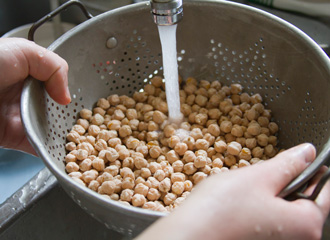Blog

As I wrote in my last blog on beans, they fit many of my requirements as a mom and dietitian. They are very nutritious, they’re inexpensive, and they work well in dishes my family enjoys. Most of the time I use canned beans. They are very convenient and besides draining and rinsing, require no additional cooking. You can find ‘no salt added’ canned beans, which is great since many of us get more than enough sodium in our diets. And they usually don’t cost any more than the regular kind. If you’d rather not use the ‘no salt added’ kind, rinse the beans to reduce the sodium.
On occasion, I also like to cook dry beans. And some of my family and friends prefer to cook their own beans instead of using the canned versions. Canned beans are an inexpensive source of protein and when buying them dry, they are even less expensive. You might think that cooking dry beans is too much hassle if you haven’t tried it before. It does take time but most of that time you don’t have to stand over them while they cook. When I cook dry beans, I like to use the Slow Cooker Method.
Here are the steps to success:
- Spread 1 pound dried beans on a baking sheet and remove any small stones, dirt or withered beans.
- Put the beans in a strainer and rinse them under running water.
- Add beans and 8 cups of water to a slow cooker, then cook them on low for 6-8 hours until soft.
- Serve right away or freeze the beans in 1 ½ cup portions to use later. One and a half cups is about the amount in 1-15 ounce can of beans. How easy is that?!

